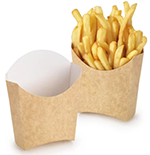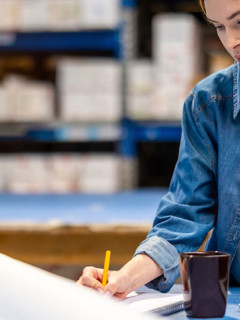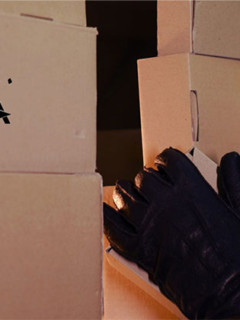Bags are among the oldest containers of all: as early as the Stone Age, they were made from funnel-shaped folded leaves, animal horns or animal bladders and grains, nuts, seeds or pulpy meals were stored and transported in them. Paper has been produced in Germany since around 1400, and paper bags subsequently found their first use. With industrialisation, paper finally began its worldwide triumphal march. The first factory-made paper bags were produced in 1853.
The plastic bag: rise and fall
The plastic bag boomed in the consumer society of the 1950s and 1960s. At the same time, science was tinkering with new, easy-to-process materials that were handy and tear-resistant. At the beginning of the fifties, the first plastic bags made of fully synthetic plastic came onto the market – mostly made of polyethylene (PE). 1965 marked the beginning of the mass age of the plastic bag, which soon outstripped its paper sister and achieved higher market shares. Its advantages: it weighs little, but at the same time can withstand heavy loads. It is also waterproof and can be used several times.
An advantage that was unfortunately forgotten all too quickly: all too often, the plastic bag was used only once and then disposed of, also far too often improperly – which contributed to the permanent littering of the world’s oceans.
65 bags a year – per consumer
Even if the plastic bag is gradually disappearing from our everyday lives and is welcome to be replaced by reusable carrier bags are being replaced: An average of 65 bags pass through our hands every year. Yet they function not only as a practical carrying aid, but also as an advertising medium. Because a sturdy carrier bag is used again (and again and again and again…). Each bag thus comes to almost 300 visual contacts in its “life” – a considerable number for an object that was initially only intended to make shopping easier.
Paper, plastic or jute?
Which variant is now the Ecologically more sensible carrier bag? On closer inspection, it becomes clear that it is not the material that makes the difference. It’s the behaviour of the user: if a bag is reused several times, its eco-balance improves with each use. And at the same time, the number of visual contacts increases!
Carrier bags as ideal advertising media
Due to their variety of design possibilities and low production costs, carrier bags are ideal advertising media. Companies were also quick to recognise this potential – and the principle of the “running” poster was born: for example, the Horten department stores’ distributed plastic bags in large quantities for the first time in 1961. Other shops, even smaller ones, followed suit. Relatively recently, it was impossible to imagine our everyday life without the practical helper, and so it has become part of our Consumer and cultural history everyday life. However, the big department stores and retail chains in particular reacted to public pressure and took plastic bags out of their range. The next step in the history of the plastic bag could therefore be that from an everyday object to a collector’s item 😉
While the carrier bag made of LDPE, for example, is disappearing from shopping arcades, shopping malls and supermarkets, paper carrier bags and other alternatives such as the cotton carrier bag and the lacquered paper carrier bag for high-quality products are celebrating a veritable triumph. As different as they are, they all have something in common: they can be printed and personalised – and thus become an advertising medium. At RAJA you can have carrier bags printed.
And so an elaborately and originally designed carrier bag is an asset in more ways than one:
- It serves as an advertisement for your company and brand
- It conveys the idea of sustainability – which will also contribute to your brand image
- It is robust and durable – which will increase the number of uses and thus the number of visual contacts
The voluntary commitment of the HDE
There is agreement on the need to reduce the consumption of plastic bags. Only the way in which the reduction prescribed by the EU should be implemented in Germany has been the subject of lengthy debate. At the end of the debate: a voluntary commitment by the HDE (German Retail Association). EU Directive 2015/720, adopted in April 2015, which aims to reduce the consumption of lightweight plastic carrier bags (wall thickness less than 50 microns) to 90 per inhabitant by 2019 and to 40 per inhabitant by 2025, has long since reached the retail sector. With a consumption of 71 carrier bags, Germany is well below the EU average of 198 per inhabitant and has thus already reached the 2019 target. However, the further decline in consumption is rather sluggish. The voluntary commitment of the German retail sector is intended to counteract this: On 1 July, the agreement on reducing the consumption of plastic carrier bags between the Federal Ministry for the Environment, Nature Conservation, Building and Nuclear Safety (BMUB) and the German Retail Association (HDE) was officially launched.
First successes in trade
Since the agreement came into force, according to which within two years 80 per cent of plastic bags in the retail trade (approx. 6.1 billion bags per year) are to be dispensed only for a fee, per capita consumption has already fallen significantly at many participating companies. According to the HDE, 350 retail companies already charge for plastic bags. At the POS, alternatives are now increasingly being offered – and demanded! Large retail chains, for example, speak of a decline in demand and a reduction in the plastic bag charge of between 50 and up to 90 per cent.















